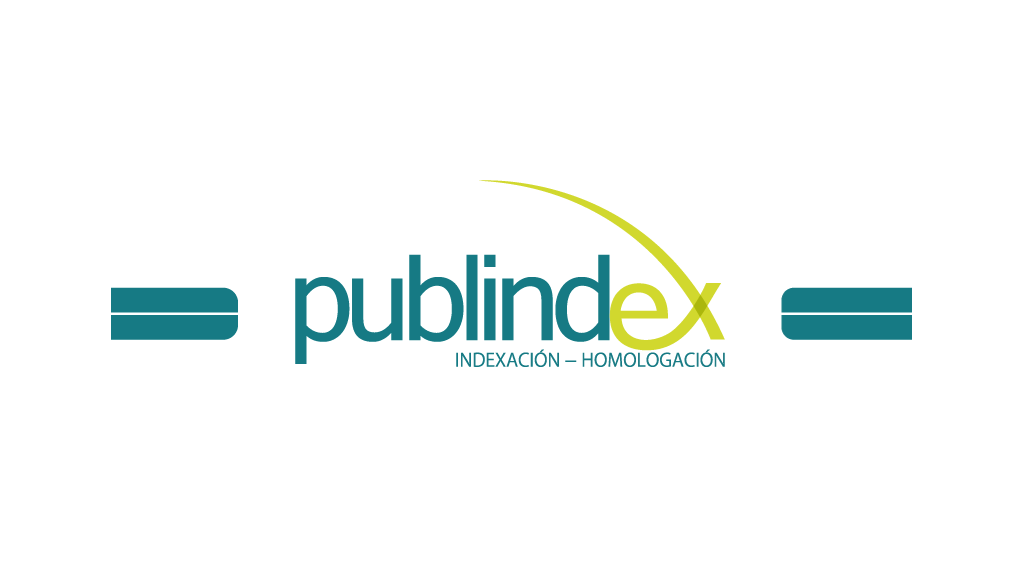
This work is licensed under a Creative Commons Attribution-NonCommercial-ShareAlike 4.0 International License.
Authors who publish in this journal agree to the following terms:
Acta Colombiana de Psicología complies with international intellectual property and copyright laws, and particularly with Article No. 58 of the Political Constitution of Colombia, Law No. 23 of 1982, and the Agreement No. 172 of September 30, 2010 (Universidad Católica de Colombia Intellectual Property Regulation).
Authors retain their copyright and grant to the Acta Colombiana de Psicología the right of first publication, with the work registered under Creative Commons attribution license, which allows third parties to use the published material, provided they credit the authorship of the work and the first publication in this Journal.
Abstract
The aim of this study was to analyze the internal structure of the short version of the Coping Responses Inventory (CRI-SF) with a sample of 987 individuals aged between 18 and 63 years (M = 29; SD = 9.86) from the city of Buenos Aires, Argentina. Three models were compared using confirmatory factor analyses: Model 1, which tested the fit of the 24 items of the CRI-SF to the approach and avoidance factors; Model 2, which tested the fit of the 24 items to four dimensions according to focus and method; and Model 3, which tested the fit of the 24 items to eight dimensions with second-order approach and avoidance factors. Respecified Models 1 and 2 showed adequate fit, with the following values : χ² (GL) = 650.18 (146), RMSEA (IC 90 %) = .07 (.07-.08), SRMR = .08, CFI = .92, TLI = .91, GFI = .96, PNFI = .73, AIC = 46629.55, y χ² (GL) = 747.55 (146), RMSEA (IC 90 %) = .06 (.06-.07), SRMR = .07, CFI = .93, TLI = .92, GFI = .97, PNFI = .79, AIC = 51908.43, respectively, and invariance by gender. Model 1 showed higher reliability values. Based on the results and the underlying theoretical model, a valid and reliable short form of the CRI-SF was obtained, consisting of 19 items that measure four factors.
Keywords

References
Allen, M. T. (2021). Explorations of avoidance and approach coping and perceived stress with a computer-based avatar task: detrimental effects of resignation and withdrawal. PeerJ, 9, e11265. https://doi.org/10.7717/ peerj.11265
American Psychological Association [APA]. (2010). Publication Manual of the American Psychological Association (6.a ed.). American Psychological Association.
Aspinwall, L. G., & Taylor, S. E. (1997). A stitch in time: self-regulation and proactive coping. Psychological Bulletin, 121(3), 417-436. https://doi.org/10.1037/0033-2909.121.3.417
Ato, M., López-García, J. J., & Benavente, A. (2013). Un sistema de clasificación de los diseños de investigación en psicología. Anales de Psicología, 29(3), 1038-1059. https://dx.doi.org/10.6018/analesps.29.3.178511
Bandalos, D. L., & Finney, S. J. (2018). Factor analysis: Exploratory and confirmatory. En G. R. Hancock & R. O. Mueller (Eds.), The reviewer’s guide to quantitative methods in the social sciences (pp. 98-122). Routledge.
Biggs, A., Brough, P., & Drummond, S. (2017). Lazarus and Folkman’s psychological stress and coping theory. En C. L. Cooper & J. C. Quick (Eds.), The Handbook of Stress and Health: A Guide to Research and Practice (pp. 351-364). Wiley Blackwell. https://psycnet.apa.org/doi/10.1002/9781118993811.ch21
Blalock, J. A., & Joiner, T. E. (2000). Interaction of cognitive avoidance coping and stress in predicting depression/ anxiety. Cognitive Therapy and Research, 24(1), 47-65. https://doi.org/10.1023/A:1005450908245
Brown, T. A. (2006). Confirmatory factor analysis for applied research. Guilford publications.
Byrne, B. M. (2016). Multigroup comparisons: Testing for measurement, structural, and latent mean equivalence. En F. T. L. Leong, D. Bartram, F. M. Cheung, K. F. Geisinger & D. Iliescu (Eds.), The ITC International Handbook of Testing and Assessment (pp. 377-394). Oxford University Press.
Chalmers, R. P. (2018). On Misconceptions and the Limited Usefulness of Ordinal Alpha. Educational and psychological measurement, 78(6), 1056-1071. https://doi.org/10.1177/0013164417727036
Cohen, J. (1988). Statistical Power Analysis for the Behavioral Sciences (2.a ed.). Routledge.
Crespo, M., & Labrador, F. (2003). Estrés. Síntesis. Cronbach, L. J. (1951). Coefficient alpha and the internal structure of tests. Psychometrika, 16(3), 297-334. https:// doi.org/10.1007/BF02310555
Davidov, E., Schmidt, P., Billiet, J., & Meuleman, B. (Eds.). (2018). Cross-cultural analysis: Methods and applications (2.a ed.). Routledge.
Eyles, D. J., & Bates, G. W. (2005). Development of a shortened form of the Coping Responses Inventory-Youth with an Australian sample. North American Journal of Psychology, 7(2), 161-170. https://figshare.swinburne. edu.au/ndownloader/files/47534270
Flora, D. B. (2020). Your coefficient alpha is probably wrong, but which coefficient omega is right? A tutorial on using R to obtain better reliability estimates. Advances in Methods and Practices in Psychological Science, 3(4), 484-501. https://doi.org/10.1177/2515245920951747
Folkman, S. (2020). Stress: Appraisal and Coping. En M. D. Gellman & J. R. Turner (Eds.), Encyclopedia of Behavioral Medicine (pp. 1913-1915). Springer.
Folkman, S., & Moskowitz, J. T. (2004). Coping: Pitfalls and promise. Annual Review of Psychology, 55(1), 745-774. http://dx.doi.org/10.1146/annurev.psych.55.090902.141456
Frydenberg, E. (2017). Coping and the Challenge of Resilience. Springer.
Fu, W., Wang, C., Zou, L., Guo, Y., Lu, Z., Yan, S., & Mao, J. (2020). Psychological health, sleep quality, and coping styles to stress facing the COVID-19 in Wuhan, China. Translational Psychiatry, 10(1), 1-9. https://doi.org/10.1038/ s41398-020-00913-3
Gadermann, A. M., Guhn, M., & Zumbo, B. D. (2012). Estimating Ordinal Reliability for Likert-Type and Ordinal Item Response Data: A Conceptual, Empirical, and Practical Guide. Practical Assessment, Research & Evaluation, 17, 3. http://files.eric.ed.gov/fulltext/EJ977577.pdf
Gallucci, M., & Jentschke, S. (2021). SEMLj: jamovi SEM Analysis. [jamovi module]. https://semlj.github.io
George, D., & Mallery, P. (2011). Descriptive statistics. En S. Hartman (Ed.), SPSS for Windows Step by Step: A Simple Guide and Reference 18.0 Update (pp. 95-104). Pearson.
Gomis-Pomares, A., Villanueva, L., & Basto-Pereira, M. (2022). Psychometric Properties of the Deviant Behavior Variety Scale in Young Spanish Adults. Psicothema, 34(2), 308-315. https://www.psicothema.com/pdf/4750.pdf
Green, S. B., & Yang, Y. (2009). Reliability of summed item scores using structural equation modeling: An alternative to coefficient alpha. Psychometrika, 74(1), 155-167. https://doi.org/10.1007/s11336-008-9099-3
Groth-Marnat, G. (2009). Handbook of Psychological Assessment (5.a ed.). John Wiley & Sons.
Gurvich, C., Thomas, N., Thomas, E. H., Hudaib, A. R., Sood, L., Fabiatos, K., Sutton, K., Isaacs, A., Arunogiri, S., Sharp, G., & Kulkarni, J. (2020). Coping styles and mental health in response to societal changes during the COVID-19 pandemic. The International Journal of Social Psychiatry, 67(5), 540-549. https://doi. org/10.1177/0020764020961790
Hair Jr, J. F., Black, W. C., Babin, B. J., & Anderson, R. E. (2014). Multivariate Data Analysis (7.a ed.). Pearson New International Edition.
Halstead, M., Johnson, S. B., & Cunningham, W. (1993). Measuring coping in adolescents: An application of the Ways of Coping Checklist. Journal of Clinical Child Psychology, 22(3), 337-344. https://doi.org/10.1207/ s15374424jccp2203_4
Herman-Stahl, M. A., Stemmler, M., & Petersen, A. C. (1995). Approach and avoidant coping: Implications for adolescent mental health. Journal of Youth and Adolescence, 24(6), 649-665. https://doi.org/10.1007/BF01536949
Hobfoll, S. E. (1989). Conservation of resources: A new attempt at conceptualizing stress. American Psychologist, 44(3), 513-524. https://doi.org/10.1037/0003-066X.44.3.513
Hoyle, R. H. (1995). The structural equation modeling approach: Basic concepts and fundamental issues. En R. H. Hoyle (Ed.), Structural Equation Modeling: Concepts, Issues, and Applications (pp. 1-15). Sage Publications, Inc.
Hu, L., & Bentler, P. M. (1999). Cutoff criteria for fit indexes in covariance structure analysis: Conventional criteria versus new alternatives. Structural Equation Modeling: A Multidisciplinary Journal, 6(1), 1-55. https://doi. org/10.1080/10705519909540118
Jorgensen, T. D., Pornprasertmanit, S., Schoemann, A. M., Rosseel, Y., Miller, P., Quick, C., Garnier-Villarreal, M., Selig, J., Boulton, A., Preacher, K., Coffman, D., Rhemtulla, M., Robitzsch, A., Enders, C., Arslan, R., Clinton, B., Panko, P., Merkle, E., Chesnut, S., … Rönkkö, M. (2019). semTools: Useful Tools for Structural Equation Modeling. [R Package]. https://CRAN.R-project.org/package=semTools
Kar, N., Kar, B., & Kar, S. (2021). Stress and coping during COVID-19 pandemic: Result of an online survey. Psychiatry Research, 295, 113598. https://doi.org/10.1016/j.psychres.2020.113598
Kemper, C. J., Trapp, S., Kathmann, N., Samuel, D. B., & Ziegler, M. (2019). Short versus long scales in clinical assessment: Exploring the trade-off between resources saved and psychometric quality lost using two measures of obsessive–compulsive symptoms. Assessment, 26(5), 767-782. https://doi.org/10.1177/1073191118810057
Kirchner, T., Forns, M., Muñoz, D., & Pereda, N. (2008). Psychometric properties and dimensional structure of the Spanish version of the Coping Responses Inventory-Adult Form. Psicothema, 20(4), 902-909. https://www. psicothema.com/pdf/3573.pdf
Kyriazos, T. A. (2018). Applied Psychometrics: Sample Size and Sample Power Considerations in Factor Analysis (efa, CFA) and SEM in General. Psychology, 9(8), 2207-2230. https://doi.org/10.4236/psych.2018.98126
Labiano, L. M., & Correché, M. S. (2002). Afrontamiento del estrés. Revista Argentina de Clínica Psicológica, 11(2), 105- 112. https://psycnet.apa.org/record/2003-07704-002
Lazarus, R. S. (1991). Emotion and Adaptation. Oxford University Press.
Lazarus, R. S., & Folkman, S. (1984). Stress, Appraisal and Coping. Springer.
Mardia, K. V. (1970). Measures of multivariate skewness and kurtosis with applications. Biometrika, 57(3), 519-530. https://doi.org/10.1093/biomet/57.3.519
Martínez, I. M., Meneghel, I., & Peñalver, J. (2019). ¿El género afecta en las estrategias de afrontamiento para mejorar el bienestar y el desempeño académico?. Revista de Psicodidáctica, 24(2), 111-119. https://doi.org/10.1016/j. psicod.2019.01.003
Mikulic, I. M. (1998). Ecoevaluación Psicológica del Exdelincuente en su Ambiente Natural. [Tesis de doctorado no publicada]. Universidad de Belgrano.
Mikulic, I. M., & Crespi, M. C. (2008). Adaptación y Validación del Inventario de Respuestas de Afrontamiento de Moos (CRI-A) para adultos. Anuario de investigaciones, 15, 305-312. https://www.redalyc.org/pdf/3691/369139944030.pdf
Mikulic, I. M., Casullo, G., Radusky, P., & Caballero, R. (2015). Fiabilidad de un sistema de categorías de situaciones estresantes y análisis diferencial en población adulta de Buenos Aires, Argentina. Anuario de Investigaciones, 22, 319-325. https://www.redalyc.org/pdf/3691/369147944033.pd
Monticone, M., Giordano, A., & Franchignoni, F. (2021). Scale Shortening and Decrease in Measurement Precision: Analysis of the Pain Self-Efficacy Questionnaire and Its Short Forms in an Italian-Speaking Population With Neck Pain Disorders. Physical Therapy & Rehabilitation Journal, 101(6), pzab039. https://doi.org/10.1093/ptj/pzab039
Moos, R. H. (1993). Coping responses Inventory: Adult Form: Professional Manual. Psychological Assessment Resources, Inc.
Müller, P., & Schäfer, S. (2017). Latent Mean (Comparison). En J. Matthes, C. S. Davis & R. F. Potter (Eds.), International Encyclopedia of Communication Research Methods (pp. 1-7). Wiley.
Ondé, D., & Alvarado, J. M. (2022). Contribución de los Modelos Factoriales Confirmatorios a la Evaluación de Estructura Interna desde la Perspectiva de la Validez. Revista Iberoamericana de Diagnóstico y Evaluación Psicológica, 5(66), 5-22. https://doi.org/10.21865/RIDEP66.5.01
Otzen, T., & Manterola, C. (2017). Técnicas de muestreo sobre una población a estudio. International Journal of Morphology, 35(1), 227-232. https://doi.org/10.4067/S0717-95022017000100037
Pearlin, L. I., & Schooler, C. (1978). The structure of coping. Journal of health and social behavior, 19(1), 2-21. https:// doi.org/10.2307/2136319 Pérez, D. O. (2020). Revisión del concepto de causalidad en el marco del Análisis Factorial Confirmatorio. Revista Iberoamericana de Diagnóstico y Evaluación Psicológica, 1(54), 103-117. https://doi.org/10.21865/RIDEP54.1.09
Pfeiffer, P. E. (1990). Variance and Standard Deviation. En P. E. Pfeiffer (Ed.), Probability for Applications (pp. 355-370). Springer. https://doi.org/10.1007/978-1-4615-7676-1_19
Phelps, S. B., & Jarvis, P.A. (1994). Coping in adolescence: Empirical evidence for a theoretically based approach to assessing coping. Journal of Youth and Adolescence, 23, 359-371. https://doi.org/10.1007/BF01536724
R Core Team. (2021). R: A Language and environment for statistical computing (versión 4.1) [software]. https:// cran.r-project.org
Rana, I. A., Bhatti, S. S., Aslam, A. B., Jamshed, A., Ahmad, J., & Shah, A. A. (2021). COVID-19 risk perception and coping mechanisms: Does gender make a difference?. International Journal of Disaster Risk Reduction, 55, 102096. https://doi.org/10.1016/j.ijdrr.2021.102096
Rettie, H., & Daniels, J. (2021). Coping and tolerance of uncertainty: Predictors and mediators of mental health during the COVID-19 pandemic. American Psychologist, 76(3), 427-437. https://doi.org/10.1037/amp0000710
Rhemtulla, M., Brosseau-Liard, P. É., & Savalei, V. (2012). When can categorical variables be treated as continuous? A comparison of robust continuous and categorical SEM estimation methods under suboptimal conditions. Psychological Methods, 17(3), 354-373. https://doi.org/10.1037/a0029315
Richaud de Minzi, M. C. (2006). Evaluación del afrontamiento en niños de 8 a 12 años. Revista Mexicana de Psicología, 23(2), 193-201. https://ri.conicet.gov.ar/bitstream/handle/11336/102464/CONICET_Digital_Nro.145f6350- a05b-4211-b5c1-bec9a567a5ad_B.pdf?sequence=5&isAllowed=y
Rodríguez, M. N., & Ruiz, M. A. (2008). Atenuación de la asimetría y de la curtosis de las puntuaciones observadas mediante transformaciones de variables: incidencia sobre la estructura factorial. Psicológica: Revista de metodología y psicología experimental, 29(2), 205-227. https://www.uv.es/psicologica/articulos2.08/6RODRIGUEZ.pdf
Rosseel, Y. (2012). Lavaan: An R Package for Structural Equation Modeling. Journal of Statistical Software, 48(2), 1-36. https://doi.org/10.18637/jss.v048.i02
Sellbom, M., & Tellegen, A. (2019). Factor analysis in psychological assessment research: Common pitfalls and recommendations. Psychological Assessment, 31(12), 1428-1441. https://doi.org/10.1037/pas0000623
Senado y Cámara de Diputados de la Nación Argentina. (2000). Protección de los datos personales. Ley 25.326. https:// www.oas.org/juridico/pdfs/arg_ley25326.pdf
Selye, H. (2013). Stress in Health and Disease. Butterworth-Heinemann.


































